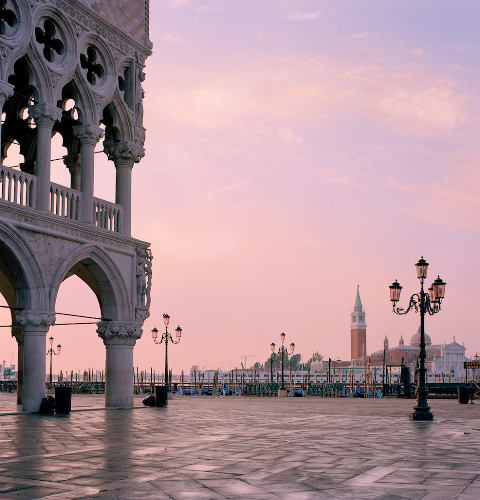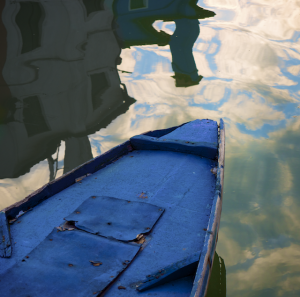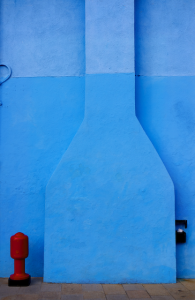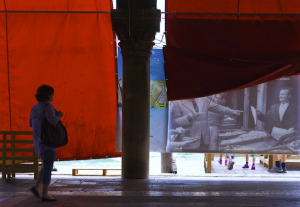Venice: Light, Atmosphere & Drama
Saturday, June 9 to Wednesday, June 13, 2012
Only Three spots remaining; contact Jeff now to hold your place: jeff@jeffcurto.com or 630.202.3635

“Venice is like eating an entire box of chocolate liqueurs in one go.” So wrote Truman Capote. Other writers and artists and poets have tried to capture the essence of a city that Italians call “La Serrinissima” – the most serene one. It’s a city of water and stone but also a city of tremendous atmosphere and theatrical drama. Once one of the richest and most powerful republics in all of Europe, Venice is now one of the most well-preserved historic cities in the world. It’s made up of 118 islands connected by footbridges and riddled with winding canals, creating a place that has an amazing quality of light and presence that is all its own.
Photographically, our objective will be to capture both the dream that is Venice and the everyday life of Venetians in their water bound world. Our time will be divided between the theatrical riot that is the central part of the city, the quieter and less touristed “sestieri” or neighborhoods outside of San Marco and the placid solitude of the Venetian lagoon and its outlying islands. We will also make time to look at and contemplate the images we make, with critique, guidance and advice helping to push you towards creating richer, more complete photographs.
Working from the delightful and centrally-located Hotel Al Piave, we will work on photographing the essence of a city that is made up of light, air, water, stone and drama. I will work with you to help you develop your own response to this astonishing and magical city. Writer Fran Liebowitz said, “f you read a lot, nothing is as great as you’ve imagined. Venice is — Venice is better.” She’s right.
Register for the workshops here!
Day 1 Saturday, June 9
 Some workshop participants will be continuing on from the previous week’s Tuscany Workshop, but for those who are just joining in at this point, you can meet us in Venice at Hotel Al Piave.
Some workshop participants will be continuing on from the previous week’s Tuscany Workshop, but for those who are just joining in at this point, you can meet us in Venice at Hotel Al Piave.
Get out and begin to explore Venice on your own before you gather before dinner for introductions and some general instruction from Jeff. We’ll talk about some ways that we can approach the challenges of photographing in Venice and lay out our plans for our time together in this inspirational city.
Day 2 Sunday, June 10
Now that you’ve had a good night’s rest, we’re ready to begin our photographic exploration of Venice in earnest. Where else to start but St. Mark’s Square?
Our expert guide will meet you and escort you on a walking tour of this romantic city that begins in San Marco Square with the magnificent Basilica of San Marco. One of the most unique cities in the world, Venice offers priceless art, stunning architecture and an element of mystery with its canals and winding alleyways. Admire the church’s rich, detailed mosaics and the sculptures that adorn this enchanting structure. Next, learn about Venetian art and style with a tour of the gothic Doge’s Palace that dates to approximately 1309, and its trove of treasures. This visit concludes in the Rialto area where clients will stroll over the city’s oldest and best-known Rialto Bridge to end in the bustling Rialto Market for a glimpse of local life.
As you’ve seen, Venice has its fair share of monuments, museums, and decorated churches, but frankly just about the best thing you can do today is ignore all the sights and just wander the streets aimlessly. You won’t have to try too hard to get lost, but… it’s OK; you’re on an island so you can’t get too far off track. You’ll stroll past slowly decaying Gothic palaces decorated with pointy Byzantine windows, stumble across pocket-sized campielli (squares) where the news du jour is exchanged and discussed, and duck into the shade of a tiny bar to share a glass of wine (ombra here in Venice) with the locals. To best avoid the tourist crowds, head deep into the residential neighborhoods of Castello (especially in the eastern half); northern Cannaregio, especially the Ghetto (the medieval Jewish quarter); and La Giudecca, another large Venetian island not connected to the rest by any bridge.

Day 3 Monday, June 11
We’ll have a relaxing morning of informal critique, photographic instruction and discussion and, after lunch, get around like the Venetians do… by vaporetto or water-bus. You’ll first visit Venice’s birthplace, T orcello, which is about a 40-minute ride from the main islands of Venice. It made its reputation as a haven 1,500 years ago — nearly 500 years before Venice became an empire — when mainlanders, escaping invading barbarians, settled here. Venetians love to go there once in a while as they are attracted by its calm and the greenness of the island. Unlike Murano and Burano, T orcello is practically uninhabited and still has a lot of archeological proof of its glorious past, including a magnificent Byzantine-Italian cathedral, the Basilica of Santa Maria Assunta, dating back to 639 A.D. The mosaics of this church alone — especially those of the 12th century Madonna and Child and the 11th and 12th century Last Judgment — are worth a visit to the island. But while the opulence and artistry on the walls are arguably as fine as can be found anywhere, don’t forget to look down. The floor mosaics complete the medieval kaleidoscope.
Next stop: Burano, with its brightly painted houses, is world-renowned for intricate lace making and provides countless artistic opportunities. There are many charming yards and squares where drying laundry adds to the general decorative gaiety of Burano. Along the lagoon shore you’ll find superb views of Torcello (with, on a clear day, a mountainous backdrop) and smaller islands like San Francesco del Deserto. The town of Burano covers the island, with several small canals acting as thoroughfares. There are a couple of larger squares, and many little lanes and alleys. The town’s fishing industry can be glimpsed along the canal sides and around the island’s shores, where there are tiny fishing harbors. There are no essential tourist attractions other than the island itself and its general ambience. Apart from the painted houses, Burano’s most identifiable landmark is the island’s church, San Martino, which has an impressively-leaning bell tower, to rival the most slanting of Venice’s campanili. Inside the church is a Crucifixion by Tiepolo.
You’ll then enjoy dinner on Burano before heading back to our hotel.

Day 4 Tuesday, June 12
This morning, explore the Dorsoduro sestiere with an expert guide. You’ll spend about 90 minutes together and then you’ll be able to go off on your own. Dorsoduro, with its art colleges and university, has long been home to artists, designers, writers and educators. In 1750, the Gallerie dell’Accademia (now a museum housing such masterpieces as Giorgione’s “Tempest” and an array of
Bellinis) first opened as an art school. Peggy Guggenheim, the American heiress and inimitable art patron, settled in the Palazzo Venier dei Leoni in 1949, which is now home to the outstanding Guggenheim Collection.
The city’s oldest squero, a boatyard for building gondolas, is around the corner of two canals, San Trovaso and Ognissanti. The boatyard is a startling sight: three wooden lofts constructed in a decidedly Tyrolean style appear like an oversized alpine cuckoo clock rising out of a lagoon. Dating to the 17th century, the boatyard was built by the original gondola-makers, all natives of the Dolomite Mountains, where wood for boat-building was harvested.
In the Ca’ Rezzonico, a splendid 18th-century palace facing the Grand Canal, is a fantastic 1788 Battaglioli painting, “La Laguna Gelata” (“The Lagoon Frozen Over”); in it, figures in a gondola armed with an ax chop their way through the ice. Designed by Baldassare Longhena, architect for the Salute Basilica, Ca’ Rezzonico was incomplete at the time of his death and passed through various families. Robert Browning’s son owned it in the late 19th and the poet died there in 1889. Cole Porter rented it for several seasons in the 1920s, playing host to a dazzling Red and White ball in the 5,600-square- foot ballroom. Since 1936, Ca’ Rezzonico has been open as a museum dedicated to the 18th century in Venice. Handsomely renovated in 2002, the picture galleries feature the marvelous Zianigo frescoes by Giandomenico Tiepolo.
Dorsoduro has one of Venice’s liveliest squares, Campo Santa Margherita, where you will see Venetians living their everyday lives—kids kicking soccer balls around, old men talking and playing cards, women shopping for daily staples. There is a wonderful quay area, Zattere, to stroll along the water. Gelateria Nico is in this area; they have wonderful gelato. The fruit flavors are truly divine.
Return to the hotel in the early afternoon for image download and preparation of a slideshow of your best images, arranged into a group that is informed by theme, composition and concept.
Dinner together.

Day 5 Wednesday, June 13
Take a private boat to the Santa Lucia train station or the airport for your departure.
Register for the workshops here!


Friends and Students | Italy Photography Workshops with Jeff Curto
[…] forward to working with Ann Marie again… this time at the Venice Workshop! Be Sociable, Share! […]